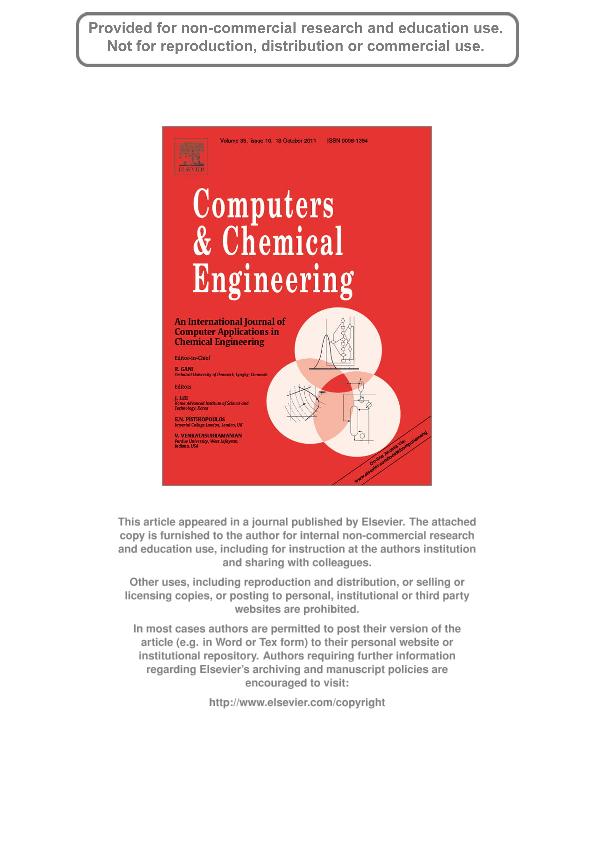Artículo
Plant-wide control strategy applied to the Tennessee Eastman process at two operating points
Fecha de publicación:
10/2011
Editorial:
Elsevier
Revista:
Computers And Chemical Engineering
ISSN:
0098-1354
Idioma:
Inglés
Tipo de recurso:
Artículo publicado
Clasificación temática:
Resumen
This work presents a new plant-wide control strategy able to be applied on large scale chemical plants. It is based on an extension of the non square relative gain array (NRG) theoretical concepts, introduced by Chang and Yu (1990), and the generalized relative disturbance gain (GRDG) presented in Chang and Yu (1992). The extension of the NRG is useful for searching the best group of controlled variables (CVs) independently of the problem dimensionality. Meanwhile, the extension of the GRDG allows configure the loops pairing by considering the trade-off between servo and regulator behavior. It can be done thanks to define a proper function, named net load effect, accounting both set point and disturbances effects. Even though these concepts are not new, the main contribution of this paper is the selection of the adequate objective function. It is mathematically expressed in a new way, in terms of Frobenius norm of specific matrices related with the models of the plant and very useful for evaluating the process interaction. Then, it drives the search supported by genetic algorithms (GA), which evaluates all the possible combinations of input–output variables. It allows to solve successfully and with less computational effort the combinatorial optimization problem, even though the high dimension usually involved in large scale chemical plants. The use of the relative gain array (RGA) can also be considered for pairing purpose, but in some cases it could drive to a less effective structure. The use of relative normalized gain array (RNGA) for pairing the selected CVs with the most suitable MVs is able to lead to best control structures only if a dynamic model of the plant is available. Therefore, it must be emphasized that this approach is developed for working in cases where only steady-state plant information is available. However, if a dynamic model is disposable too the algorithm is extended to use it. In addition, a mathematical demonstration is presented so as to understand why is possible to find a well conditioned control structure. The methodology is tested in the Tennessee Eastman (TE) process at the base case proposed by Downs and Vogel (1992), and at an optimized working point presented by Ricker (1995). Both working points show two quite different scenarios. Thus, a set of dynamic simulations for both cases and the hardware requirements compared to the previous suggested are given to proof the capacity of this approach.
Archivos asociados
Licencia
Identificadores
Colecciones
Articulos(CIFASIS)
Articulos de CENTRO INT.FRANCO ARG.D/CS D/L/INF.Y SISTEM.
Articulos de CENTRO INT.FRANCO ARG.D/CS D/L/INF.Y SISTEM.
Citación
Molina, Gonzalo Dario; Zumoffen, David Alejandro Ramon; Basualdo, M. S.; Plant-wide control strategy applied to the Tennessee Eastman process at two operating points; Elsevier; Computers And Chemical Engineering; 35; 10; 10-2011; 2081-2097
Compartir
Altmétricas




